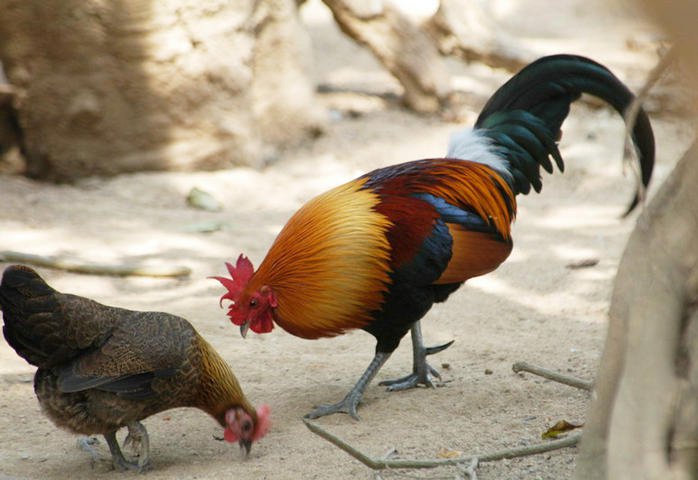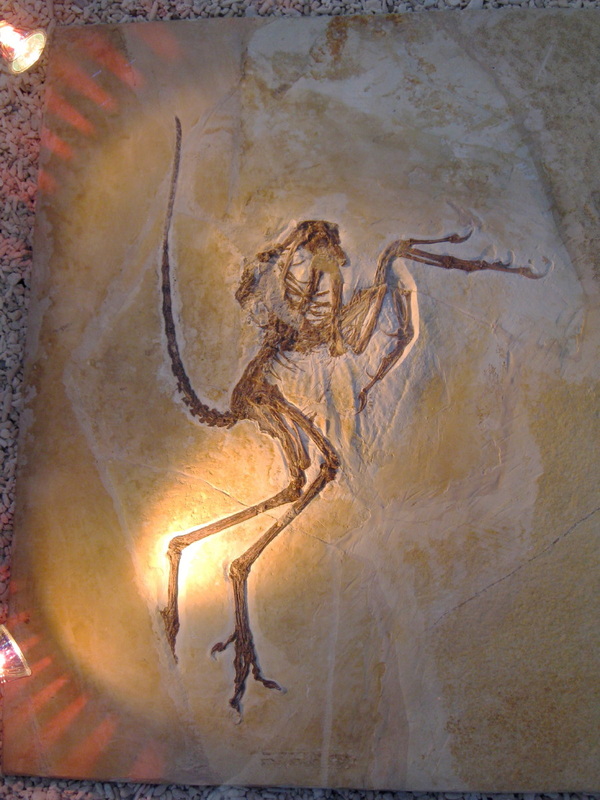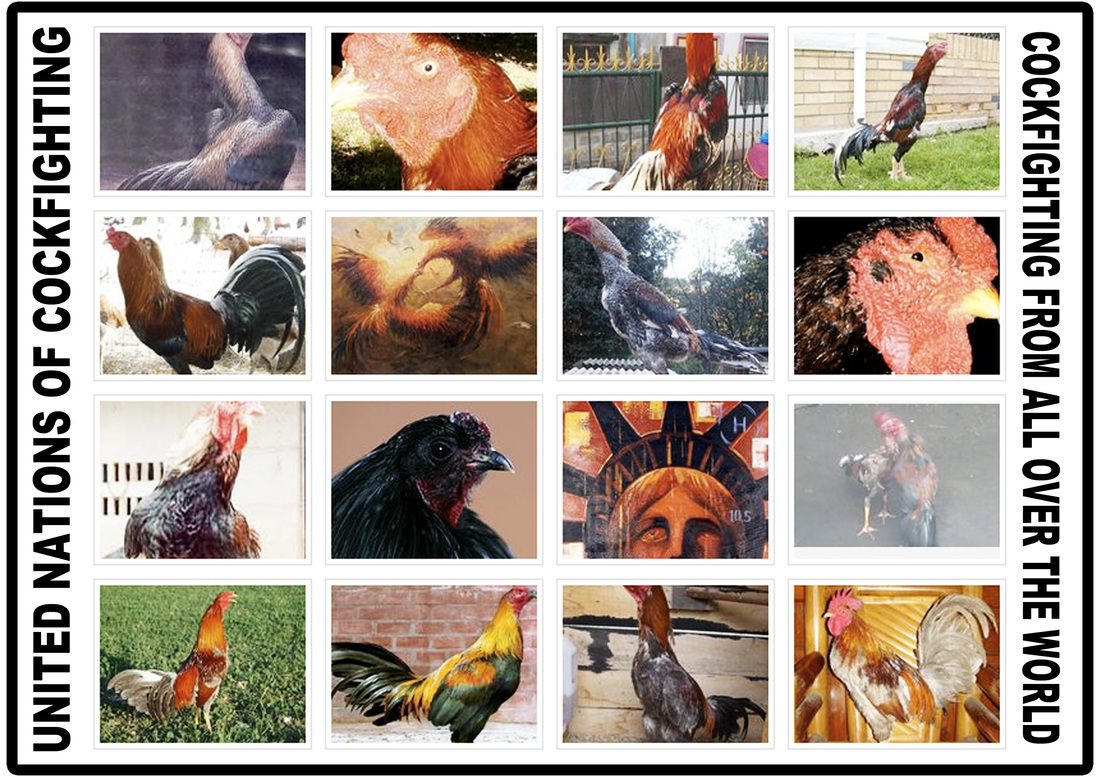|
Junglefowl are the four living species of bird from the genus Gallus in the Gallinaceous bird order, which occur in India, Sri Lanka, Southeast Asia and Indonesia. These are large birds, with colourful male plumage, but are nevertheless difficult to see in the dense vegetation they inhabit. As with many birds in the pheasant family, the male takes no part in the incubation of the egg or rearing of the precocial young. These duties are performed by the drab and well-camouflaged female. The junglefowl are seed-eaters, but insects are also taken, particularly by the young birds. One of the species in this genus, the Red Junglefowl, is of historical importance as the likely ancestor of the domesticated chicken, although it has been suggested the Grey Junglefowl was also involved. The Sri Lanka Junglefowl is the National Bird of Sri Lanka. Species
0 Comments
Archaeopteryx ( /ˌɑrkiːˈɒptərɨks/ ar-kee-op-tər-iks), sometimes referred to by its German name Urvogel ("original bird" or "first bird"), is a genus of theropod dinosaur that is closely related to birds. The name derives from the Ancient Greek ἀρχαῖος (archaīos) meaning "ancient", and πτέρυξ (ptéryx), meaning "feather" or "wing". Since the late 19th century, it has been generally accepted by palaeontologists, and celebrated in lay reference works, as being the oldest known bird, though some more recent studies have cast doubt on this assessment, finding that it might instead be a non-avialan dinosaur closely related to the origin of birds. Archaeopteryx lived in the Late Jurassic Period around 150 million years ago, in what is now southern Germany during a time when Europe was an archipelago of islands in a shallow warm tropical sea, much closer to the equator than it is now. Similar in shape to a European Magpie, with the largest individuals possibly attaining the size of a raven, Archaeopteryx could grow to about 0.5 metres (1.6 ft) in length. Despite its small size, broad wings, and inferred ability to fly or glide, Archaeopteryx has more in common with other small Mesozoic dinosaurs than it does with modern birds. In particular, it shares the following features with the deinonychosaurs (dromaeosaurs and troodontids): jaws with sharp teeth, three fingers with claws, a long bony tail, hyperextensible second toes ("killing claw"), feathers (which also suggest homeothermy), and various skeletal features. The features above make Archaeopteryx a clear candidate for a transitional fossil between dinosaurs and birds. Thus, Archaeopteryx plays an important role not only in the study of the origin of birds but in the study of dinosaurs. It was named from a feather in 1861. That same year, the first complete specimen of Archaeopteryx was announced. Over the years, ten more fossils of Archaeopteryx have surfaced. Despite variation among these fossils, most experts regard all the remains that have been discovered as belonging to a single species, though this is still debated. Most of these eleven fossils include impressions of feathers—among the oldest direct evidence of such structures. Moreover, because these feathers are of an advanced form (flight feathers), these fossils are evidence that the evolution of feathers began before the Late Jurassic. The type specimen of Archaeopteryx was discovered just two years after Charles Darwin published On the Origin of Species. Archaeopteryx seemed to confirm Darwin's theories and has since become a key piece of evidence for the origin of birds, the transitional fossils debate, and confirmation of evolution. Source: http://en.wikipedia.org/wiki/Archaeopteryx |
|



 RSS Feed
RSS Feed
